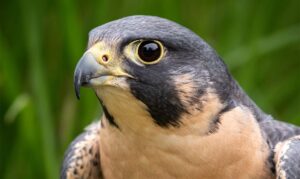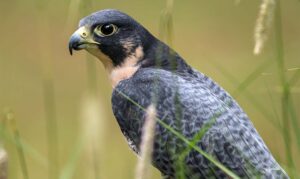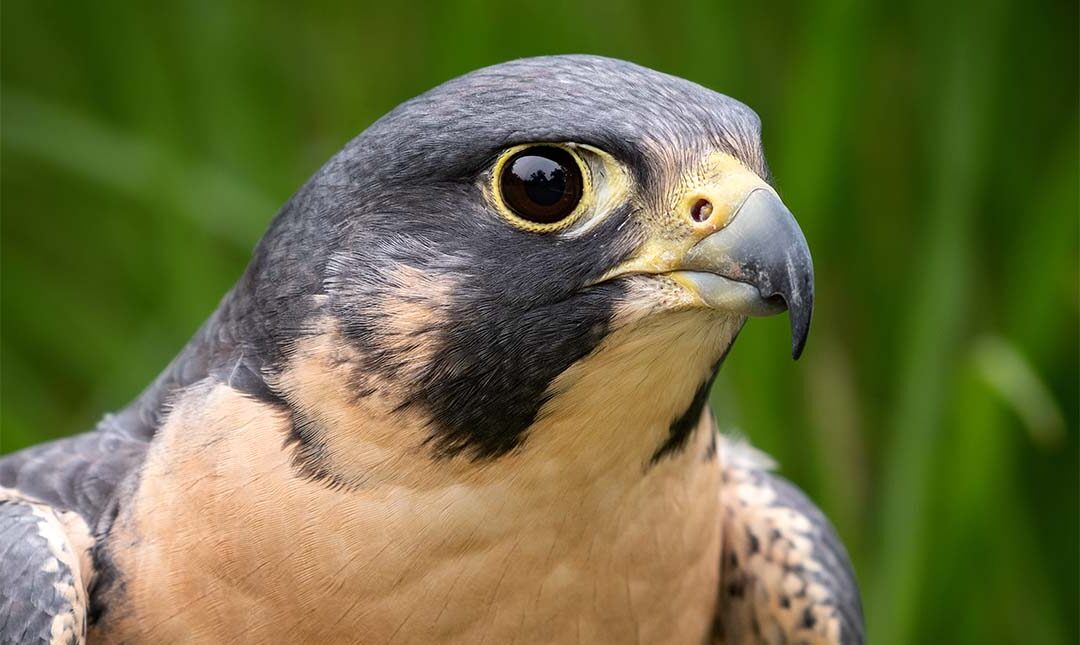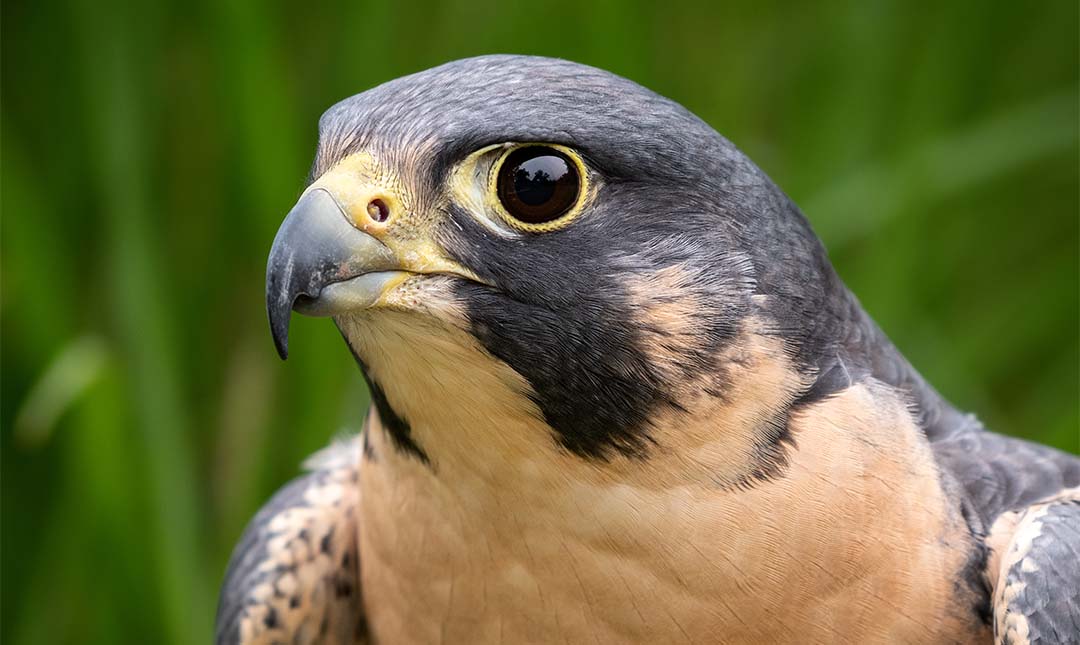About
Peregrine falcons are the world’s fastest animals, capable of reaching speeds in excess of 200 miles per hour when diving (or “stooping”) after prey. About the size of a crow, they are considered the fighter jets of the bird world—fast, highly maneuverable, and precise. A sleek body and compact wing feathers allow these falcons to soar or fold their wings back to dive, and their short tails minimize wind resistance. Special membranes cover their eyes, acting as aviator goggles to repel debris while flying. Peregrine falcons typically start their hunt from great heights. When prey is spotted, they dive, striking prey in mid-air with their feet balled up like fists and the back talon acting as a blade. They have the power to kill their prey outright with a single strike but sometimes choose to grab or “bind” to their prey, dispatching it with a fatal bite to the neck. Peregrines then take their catch to a perch to eat or, if prey is too heavy, drop it to be eaten on the ground. In the event of a failed attempt, a chase begins until the quarry tires and can be subdued.


Status
In the mid-20th century, peregrine falcon populations began to dramatically decline worldwide. They were listed under the Endangered Species Act of 1969. The decline was traced to pesticides, including DDT, that had been absorbed by their prey and, once ingested, caused their eggshells to become fragile so that they broke before chicks could develop. These pesticides were banned by the U.S. and Canada, and, in 1972, a captive breeding program was established. Over the next 30 years, more than 6,000 peregrine falcons were released back into the wild. A conservation success story, peregrine falcon populations have since recovered and their IUCN status in now listed as Least Concern.
Habitat
Among the most widespread birds, peregrine falcons are found on every continent except Antarctica. They prefer wide open spaces near mountains, rivers, and along the coast, but have also acclimated to cities. They nest on rocky ledges in the wild and on similar structures in cities—notably skyscrapers.
Diet
Peregrine falcons are carnivores, consuming primarily birds, including pigeons and mourning doves. They will occasionally hunt bats, squirrels, rats, reptiles, and insects.
Physical Characteristics
Adult falcons measure 14 to 23 inches in length with a wingspan ranging from 36 to 44 inches. They typically weigh one to three-and-a-half pounds. Females are 20 to 30 percent larger and heavier than males. The lifespan of wild peregrine falcons averages 17 years, but the longest known lifespan for a peregrine falcon in human care was 25 years.
LOCATION WITHIN THE ZOO
You may see this bird take flight in the World of Birds Show.



